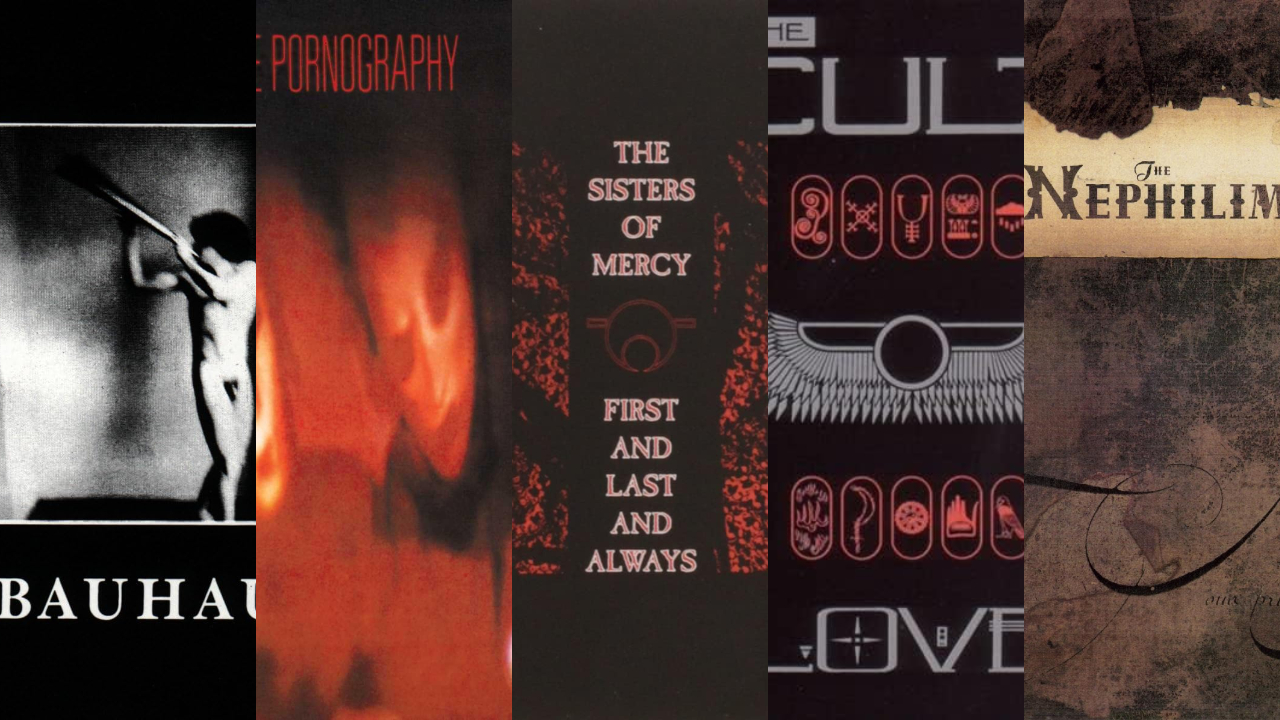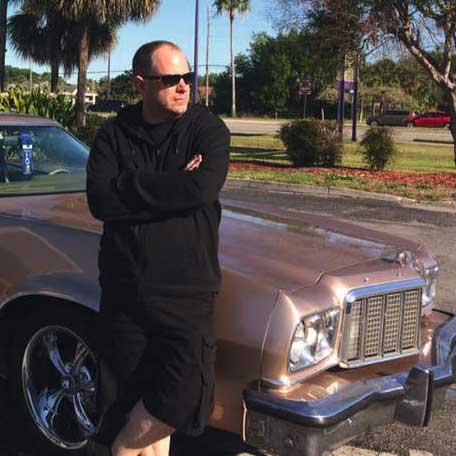It's been quite the year for '80s goth revivalism. Three separate book on the genre – The Art Of Darkness: The History Of Goth by John Robb, Season of the Witch: The Book of Goth by Cathi Unsworth and the just-published and snappily-titled Goth: A History by The Cure's co-founder Lol Tolhurst - have appeared. The Cure, who’ve now been teasing Songs Of A Lost World, their first new studio album in 15 years, for a good 12 months, were back on the road, as were Bauhaus, Love & Rockets, and Siouxsie, while Sisters of Mercy, Fields of the Nephilim and Death Cult have forthcoming tour dates in the diary. Meanwhile, legendary '80s goth label Beggars Banquet has been reissuing classic records as fast as Schwarzkopf can meet retail demand for units of Intense Black.
It goes without saying that any band with any sense always disassociates themselves from faddish scenes or genres – even if only for longevity – and that goes double for goth, although you’d imagine no-one in the early '80s would have considered it more than a passing trend that’d be quickly consigned to the recycling bin of youth style ‘n’ subculture history.
Rooted in post-punk – a genre from which The Cure and Siouxsie And The Banshees rapidly evolved – goth was originally something of a tongue-in-cheek style that purported to put sartorial issues before sound. In reality, few of the bands share anything that could be described as a ‘goth sound’ in terms of the revival of an artform influenced by Romanticism. The one thread that (largely) runs through the genre is its glam rock influence – most significantly David Bowie. Joy Division’s sound (famously described as “gothic” by producer Martin Hannett) was essentially based on side two of Bowie’s Low, and The Cure’s Robert Smith, Siouxsie Sioux and The Sisters of Mercy’s Andrew Eldritch have all spoken about Bowie’s impact on their youth. The Bowie influence on Bauhaus vocalist Pete Murphy’s singing is less hidden in plain sight and more of a kick in the eye. But in terms of both style and sound, the ostentatious flamboyance and outrageous inventiveness of glam – filtered through the minimalism of punk – was crucial to the widely disparate and creatively fertile era of the late 70s and early 80s.
That's the history lesson. Now here’s essential albums from when goth was at its most imperious.

Bauhaus – In The Flat Field (1980)
If Siousxie & The Banshees' 1978 debut The Scream was the album that launched post-punk, the subsequent debut from Bauhaus launched goth – at least as a follow-up to their unlikely phenomenon of maxi-single Bela Lugosi’s Dead. Like Bohemian Rhapsody on ketamine, it fuses Daniel Ash’s sinister squalling guitar with the remarkable rhythm section of David J and Kevin Haskins enveloped in dub (an often overlooked synthesis, though's Massive Attack's phenomenal live cover proves Bela Lugosi’s pioneering worth).
In The Flat Field’s opening triple whammy of the discomfiting Dark Entries, the none-more-black fury of Double Dare and the needling title track showed the way forward, while a chaotic cover of T-Rex’s Telegram Sam emphasises the glam influence on Bauhaus (they’d go on to cover Bowie’s Ziggy Stardust in 1982, giving them their highest UK chart placing when it reached number 15). The brooding Stigmata Martyr, the unsettling St Vitus Dance (not to be confused with the Black Sabbath track of the same name) and Nerves proved how Bauhaus were ahead of their time. An absolutely incredible and essential debut.
The Cure – Pornography (1982)
With the triptych of the minimalist Seventeen Seconds, the funereal Faith, and the overwhelming existential angst of Pornography, early '80s Cure were in high goth mode. They later successfully nailed their trademark melancholia to neo-psychedelia with The Top, The Head on the Door and Kiss Me Kiss Me Kiss Me before seeing out the '80s with their masterpiece, Disintegration. But Pornography remains their most outré work in terms of sheer desolation.
The shockingly bleak opener One Hundred Years is an outraged dismantling of the entire post-industrial, war-mongering nuclear-age of the 20th century condensed into six minutes. It’s even darker than the album’s gloom-laden sole single, The Hanging Garden. The Cure returned to playing tracks from Pornography on their latest tour – which offers some insight to the timbre of their forthcoming album. Back in 1982 and operating on drugs, depression and severe roadburn, vocalist/guitarist Robert Smith intended Pornography as the band’s final album, but instead he reinvented The Cure following renewed motivation and inspiration following his temporary adoption by Siouxsie & The Banshees.
The Sisters of Mercy – First and Last and Always (1985)
Named by founding member and vocalist Andrew Eldritch after Leonard Cohen’s 1967 country folk ballad and influenced by a who’s who of classic rock – from The Stooges, Velvet Underground, Motörhead and Suicide, to Virgin Prunes and MC5 - The Sisters were the archetypal '80s goth band with their unrivalled stygian baroque of First and Last and Always and the bacchanlian bombast of its follow-up, Floodland.
The video for appropriately titled opener Black Planet saw the band incongruously cruise California in the Monkeemobile while the album’s darkest offering, and Sisters' signature tune, Marian (co-written by Eldritch and guitarist Wayne Hussey) remains a fan favourite. In First and Last, Sisters integrated intellect (Eldritch studied at Oxford and Leeds, speaks nine languages and is a fan of the classics, poetry, and philosophy) with their post-'60s rock influence. As Amphetamine Logic suggests with its menacing refrain of “Nothing but the knife to live for”, the album was recorded with the aid of multiple chemical stimulants, resulting in Eldritch hallucinating and eventually collapsing during recording. Side one showcases what would become enduring Sisters classics while side two tightens the tourniquet with the anthemic album title track, the Byronesque poignancy of Nine While Nine and heart-wrenching ode to loss, Some Kind of Stranger.
The Cult – Love (1985)
Long before Rick Rubin somehow convinced The Cult that AC/DC and Led Zeppelin revivalism was the next big thing - not the worst career advice, to be fair, given that Electric (1987) and Sonic Temple (1989) went on to sell north of one million copies in America alone - Ian Astbury formed The Southern Death Cult before poaching guitarist Billy Duffy from Theatre of Hate and abbreviating the band name to Death Cult, then finally The Cult.
Love sees their Doors-influenced hippy-goth-psyche reach its zenith. The muscular groove of lead-off single She Sells Sanctuary with its trademark intro (inadvertently created by Duffy as he jokingly sawed his guitar strings through effects pedals with a violin bow, Jimmy Page-style) remains an '80s classic but overall, Love is The Cult at the full shamanistic-derived esoteric spirituality they explored on previous album Dreamtime. The album’s cinematic songs have outlived the generic retro blues rock found on the over-produced Electric and Sonic Temple: opener Nirvana and second single Rain are stomping goth rock classics, while Phoenix is a proto-stoner rock banger.
Fields of The Nephilim – The Nephilim (1988)
Ver Nephs: '80s goth taken to its logical extreme by transporting the genre to late 19th century frontier America. Named after a biblical race of giants, Field of the Nephilim’s fixation on horror and spaghetti western movies – both in terms of imagery and soundtracks – strongly influenced debut album, the atmospheric Sergio-Leone-meets-Sam-Raimi of Dawnrazor. The band were often dismissed for copying the Sisters but musically – apart from possibly Afterhours – their sonic palette owed more to Ennio Morricone’s expansive western movie soundtracks.
The band were driven by Carl McCoy (who had an upbringing as a Jehovah’s Witness) and second album The Nephilim blends mysticism and the occult. There are lyrical references to Aleister Crowley and HP Lovecraft and a sample of Ron Perlman from The Name Of The Rose. Not to mention screeching crows, chanting monks, and crying nuns. Obviously. Almost like a sequel to early track Trees Come Down, atmospheric album opener Endemoniada (Spanish for ‘possessed’) is a sombre slow-burn that eventually dramatically explodes into life – a study in theatrics, much like their live shows. The band nudged inside the UK Top 30 in 1988 with the release of the album’s pre-release single, Moonchild, with negligible radio or media exposure, testament to their dedicated touring ethic. Depending on your preference, Phobia is either a gothic homage or shameless rip-off of Motörhead’s Ace of Spades while Chord of Souls teeters on the edge of full-blown metal. But the mournful Celebrate and layered 10-minute epic Last Exit for the Lost showcase McCoy’s impressive vocal range. If that sounds appealing, there's a deluxe reissue coming next month.

